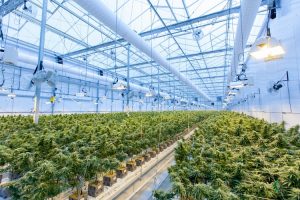Youth are becoming addicted to marijuana at nearly the same rates as prescription opioids.
Teenagers’ cannabis addiction rates are about the same as those for prescription opioids, according to a new study published in JAMA Pediatrics. The JAMA study is based on data from the three-year span between 2015 to 2018 that was collected by national surveys done conducted by the U.S. Department of Health and Human Services.
The research team explained, “Earlier age at drug initiation has been shown to be associated with faster transition to substance use disorder (SUD). However, prevalence of specific SUDs as a function of time since first substance use among young people has not, to our knowledge, been investigated. We examined the prevalence of specific SUDs since first drug use (including tobacco, alcohol, cannabis, cocaine, methamphetamine, and heroin) or prescription misuse (including opioids, stimulants, and tranquilizers) in adolescents aged 12 to 17 years and young adults aged 18 to 25 years.”
They concluded, “A year after first trying cannabis, almost 10.7 per cent of adolescents age 12 to 17 met the criteria of addiction. Those in the same age group who tried prescription opioids had a similar addiction rate of 11.2 per cent.”

Nora Volkow, an author of the JAMA study and the current director of the U.S.’s National Institute on Drug Abuse, said, “The findings contradict widely held perceptions that cannabis isn’t particularly addictive and may attract attention amid a broad U.S. push to liberalize its use. The rates of addiction were significant, especially since teenagers’ brains are still developing…One in 10 teens having a marijuana addiction — that’s huge. Using cannabis also gives them a higher chance of becoming addicted to other drugs later.”
Previous studies reported conflicting evidence, leading to this widespread perception. In 2012, a study published in the Journal of Psychoactive Drugs found, “There is a growing body of evidence to support the use of medical cannabis as an adjunct to or substitute for prescription opiates in the treatment of chronic pain…Novel research suggests that cannabis may be useful in the treatment of problematic substance use. These findings suggest that increasing safe access to medical cannabis may reduce the personal and social harms associated with addiction, particularly in relation to the growing problematic use of pharmaceutical opiates.”
And, yet the s JAMA Pediatrics team found, “For those in the 18-to-25 age range, only 6.4 per cent developed an addiction a year after first trying cannabis — about half the rate of the younger age group. In the older 18-25 category, opioid addiction rates were similar to marijuana addiction rates after one year, according to the study. Cocaine addiction rates were slightly lower. The findings underscore how important it is for doctors to ask teenage patients about recreational drug use, something that isn’t always emphasized at younger ages.”
Emily Einstein, another JAMA Pediatrics study author added, “A rise in cannabis’ potency in recent years could help to explain the higher addiction rates.” There have also been studies that have previously shown that cannabis that contains higher levels of THC tends to be more addictive.
The legalization of recreational cannabis is a hot topic right now with state and federal lawmakers considering a move to legalize it nationwide. While its sales are limited to 21 and over, research has found that younger individuals are still getting access.
Sources:
Cannabis almost as addictive as opioids among teens: study
Prevalence of Substance Use Disorders by Time Since First Substance Use Among Young People in the US
Cannabis as an adjunct to or substitute for opiates in the treatment of chronic pain


Join the conversation!